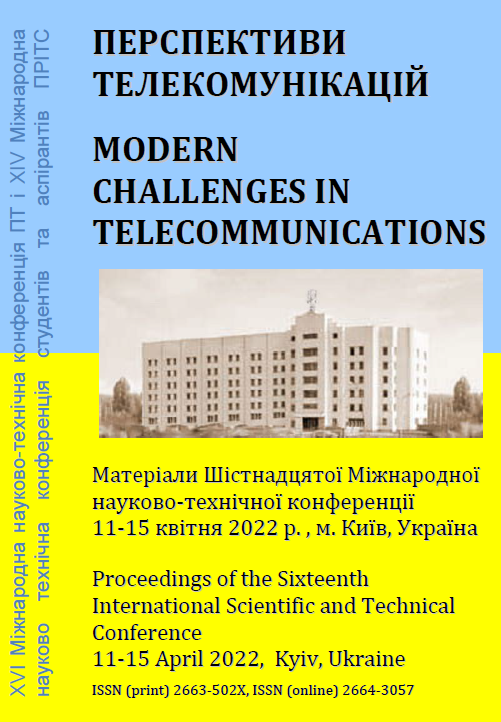ТЕРАГЕРЦОВІ ТЕЛЕКОМУНІКАЦІЙНІ СИСТЕМИ ДЛЯ ПЕРЕДАВАННЯ ВІДЕОПОТОКІВ ВИСОКОЇ (HDTV) ТА НАДВИСОКОЇ ЯКОСТІ (UHDTV)
Ключові слова:
HDTV, UHDTV, Terahertz communications systems, THz, Terahertz telecommunication systemsАнотація
Сучасні тенденції розвитку мереж наземного цифрового телебачення передбачають обмін великим обсягом даних. Дану потребу можливо вирішити, використовуючи послуги оптоволоконних мереж, які забезпечують гігабітні швидкості обміну даних в багатьох частинах світу. Але, беручи до у ваги той факт, що прокладання лінії оптоволоконного доступу не завжди є можливим або економічно рентабельним, постає питання розробки та використання безпроводових телекомунікаційних систем (мереж), які б могли задовольнити аналогічні потреби.Посилання
Наритник Т.М. Аналіз терагерцових технологій та їх застосування для створення інноваційних розробок [Електронний ресурс] / Т.М. Наритник, А.В. Єрмаков, С.О. Бондарчук, Д.С. Вальчук // Проблеми телекомунікацій. – 2017. – № 1 (20). – С. 50 - 56. – Режим доступу до журн.: http://pt.journal.kh.ua/2017/1/1/171_narytnik_terahertz.pdf
В.М. Исаев, И.Н. Кабанов, В.В. Комаров, В.П. Мещанов. Современные радиоэлектронные системы // Доклады ТУСУРа, декабрь 2014, № 4 (34), стр. 5-21.
Mandehgar M., Yang Y., and Grischkowsky D. Atmosphere characterization for simulation of the two optimal wireless terahertz digital communication links // Optics Letters. 2013. V. 38. № 17. P. 3437–3440.
G. Avdeyenko, T. Narytnik, A. Yermakov. The research of transmission of DVB-C television signals on the basis of the prototype of transceiver operating in the lower part of terahertz band. Information and telecommunication sciences – 2016. – Vol.7. – №2. – pp.81-90.
##submission.downloads##
Опубліковано
Як цитувати
Номер
Розділ
Ліцензія

Ця робота ліцензується відповідно до Creative Commons Attribution 4.0 International License.
Authors who submit to this conference agree to the following terms:a) Authors retain copyright over their work, while allowing the conference to place this unpublished work under a Creative Commons Attribution License, which allows others to freely access, use, and share the work, with an acknowledgement of the work's authorship and its initial presentation at this conference.
b) Authors are able to waive the terms of the CC license and enter into separate, additional contractual arrangements for the non-exclusive distribution and subsequent publication of this work (e.g., publish a revised version in a journal, post it to an institutional repository or publish it in a book), with an acknowledgement of its initial presentation at this conference.
c) In addition, authors are encouraged to post and share their work online (e.g., in institutional repositories or on their website) at any point before and after the conference.

